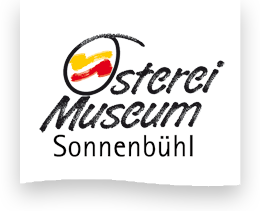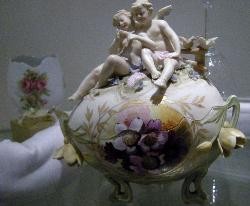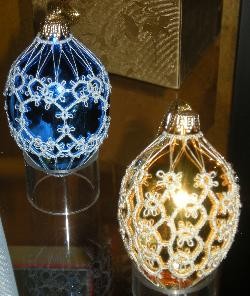Welcome to the first Easter Egg Museum in Germany
History
Quite often people ask: Easter and egg? What is the relationship between those two? In many cultures the egg is a strong symbol for the life itself. Christianity later gave it a very special meaning: the chick that hatches fresh from the egg recalls the resurrection of Jesus Christ on Easter Sunday.During Medieval times, a strict lent was observed from Ash Wednesday to Good Friday. It was forbidden to eat eggs during this period because, like meat, they were subject to abstinence. But the chickens were of course not impressed: They eagerly kept laying their eggs.All eggs from the last week of fasting - the so-called Holy Week - were therefore collected and stored. With no refrigerator at that time, boiling those eggs was the only possibility to keep them fresh. In order not to confuse the "old" eggs with the fresh ones after lent, and to symbolize the blood of Jesus Christ, they were also colored in red. Finally, on Easter Sunday, after 40 days of fasting, eggs were allowed to eat again. The holy Easter eggs were first consecrated and then given away or eaten for breakfast. The tradition of egg coloring has remained until today. Even chocolate eggs are wrapped in colored paper. Coloring also has a very simple advantage: you can find the hidden eggs much easier
Exhibition
The museum is situated in the old Erpfinger school house which originates form the 19.th century. The collection was originally started by a few ladies from Sonnenbühl-Erpfingen in 1980 and the museum formed in 1993. Today the collection still continues to grow.
First floor
The floor is home to various exhibitions, the theme is changed yearly.
Second floor
In the exhibition you will find a lot of natural eggs from Finches to Ostriches. Normally we show eggs from hens and geeses. Over 1000 eggs are exhibited from many different artists and countries with over 40 different decorating techniques.
The custom to decorate eggs sterns mainly from Catholic areas. Traditional eggs were mainly produced in Eastern Europe such as Hungary where the farmers would use cheap objects such as little pearls, reeds, paper of vegetable colourings for the decorations.
The egg mythology occurs all over the world. In nearly every country there are tales about the beginning of the earth where the egg plays a major part in the imagination, for exemple, breaking and dividing into the earth and the haven.
We hope you will enjoy your visit.
Erpfingen is a beautiful village on the Swabian Alb.



.jpg?f=%2Fsite%2FSonnenbuehl-Ostereimuseum%2Fget%2Fparams_E1110648180%2F14536331%2F1%2520%25282%2529.jpg&w=250&h=400)


